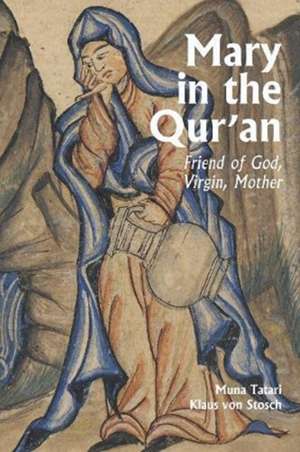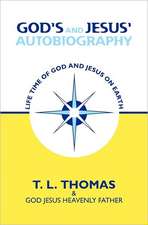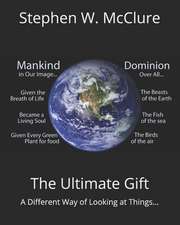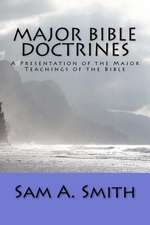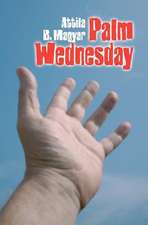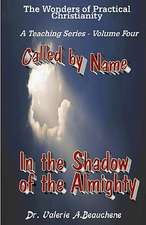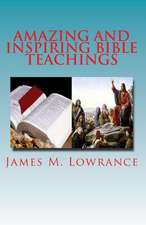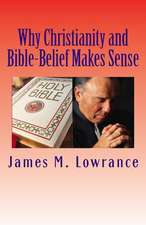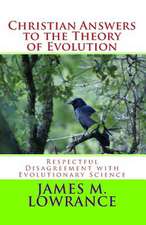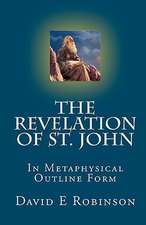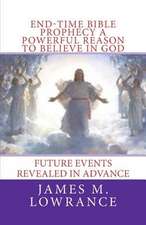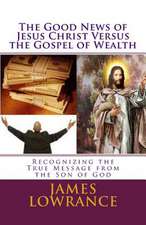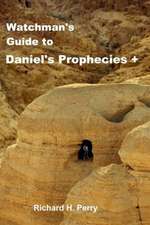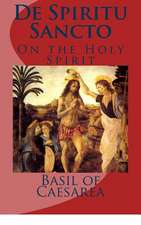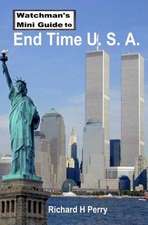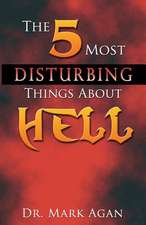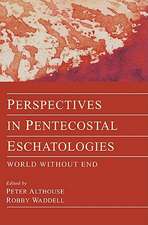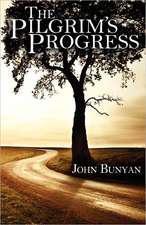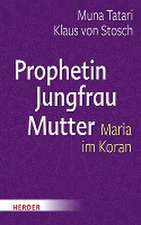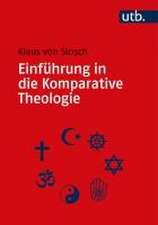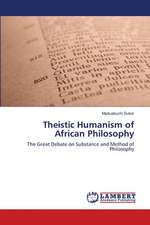Mary in the Qur'an: Friend of God, Virgin, Mother: Interfaith Series
Autor Muna Tatari, Klaus von Stosch Traducere de Peter Lewisen Limba Engleză Hardback – 18 feb 2022
An entire chapter (surah) is dedicated to her, and she is the only woman mentioned by name in the Qur’an—indeed, her name appears more frequently than that of either Muhammad or Jesus. From the earliest times to the present day, Mary, the mother of Jesus, continues to be held in high regard by Christians and Muslims alike, yet she has also been the cause of much tension between these two religions.
In this groundbreaking study, Muna Tatari and Klaus von Stosch painstakingly reconstruct the picture of Mary that is presented in the Qur’an and show how veneration of the Blessed Virgin Mary in the Roman Catholic Church intersects and interacts with the testimony of the Qur’an. This sensitive and scholarly treatise offers a significant contribution to contemporary interfaith dialogue.
Preț: 193.27 lei
Preț vechi: 260.05 lei
-26% Nou
Puncte Express: 290
Preț estimativ în valută:
36.98€ • 38.71$ • 30.78£
36.98€ • 38.71$ • 30.78£
Carte disponibilă
Livrare economică 10-24 martie
Livrare express 22-28 februarie pentru 97.51 lei
Preluare comenzi: 021 569.72.76
Specificații
ISBN-13: 9781909942622
ISBN-10: 1909942626
Pagini: 350
Ilustrații: 1 halftone
Dimensiuni: 152 x 235 x 36 mm
Greutate: 0.54 kg
Editura: Gingko
Colecția Gingko
Seria Interfaith Series
ISBN-10: 1909942626
Pagini: 350
Ilustrații: 1 halftone
Dimensiuni: 152 x 235 x 36 mm
Greutate: 0.54 kg
Editura: Gingko
Colecția Gingko
Seria Interfaith Series
Notă biografică
Muna Tatari is professor of Islamic systematic theology at the University of Paderborn and a member of the German ethics council. Klaus von Stosch is the Schlegel Professor for Systematic Theology at Bonn University and head of the International Centre for Comparative Theology and Social Issues. Peter Lewis is a freelance translator and author. His translations include Asfa-Wossen Asserate’s King of Kings; Johannes Fried’s Charlemagne, Dierk Walter’s Colonial Violence; and Gunnar Decker’s Hesse.
Cuprins
Introduction
I. Mary in the Christian Tradition
1. Mary in the Bible
a) Mary in the Corpus Paulinum and the Gospel of Mark
b) Mary in the Gospel of Matthew
c) Mary in the Gospel of Luke
d) Mary in the Gospel of John
e) Summary
2. Mary in Patristics
a) The Protevangelium of James
b) Mary as the New Eve
c) Mary as the archetype of the Church
d) Mary’s purity and lack of sin
e) Virginity and labour pains
3. Dogmatic Precepts of Mariology
a) Perpetual virginity
b) Mary as the new human being freed from original sin
c) Other dogmatic precepts
4. Mary in the Political Theology of Late Antiquity
a) The political situation during the emergence of the Qurʾan
b) The religious propaganda of Heraclius
c) Mary as military commander
d) Jewish apocalyptic counter-images
II. Mary in the Qurʾan
1. The Surah Maryam
a) Zechariah and John the Baptist (1–15)
b) Mary’s withdrawal and the proclamation of Jesus’s birth (16–21)
c) Pregnancy and birth (22–26)
d) Mary’s conflicts and Jesus as the bringer of peace
e) Mary as the mother of Jesus and as a prophet?
f) Summary
2. The Surah Āl ʿImrān
a) On the genealogy of Mary
b) Mary’s birth and childhood – the connection with Zechariah
c) The first Annunciation scene
d) The second Annunciation scene
e) Other verses from the Medinan period prior to the confrontation with Byzantium
f) Summary
3. The Surah al-Māʾida
a) Criticism of the political Mariology of Byzantium
b) Criticism of the imperial downplaying of Mary’s humanity
c) On the significance of Mary eating
d) Limits and opportunities of the presentation of Mary in the Surah al-Māʾida
III. Mary in the Context of Islamic Systematic Theology
1. The Qurʾanic Mary as an Impulse for Prophetology
a) The portrayal of Mary as an impulse for Islamic prophetology
b) On the meaning of vulnerability in the relationship with God
c) Was Mary a prophet?
2. The Mary of the Qurʾan as a Stimulus to a Traditional Understanding of God’s Actions
a) Distinctions in the perception of miracles in classical scholastic theology
b) On the crisis of the classical perception of the concept of miracles in the modern period and its consequences for the distinctions drawn by classical theology
c) A reappraisal of our understanding of miracles through the Qurʾanic Mary
d) Mary and Muhammad
3. Mary as a Figure of Emancipation
a) The story of Mary in the Qurʾan as a stimulus for greater gender equality
b) Mary as a boundary breaker
c) Mary as a stumbling-block and an incitement to subversion
4. Mary as an Aesthetic Role Model
a) An invitation to visibly reserve something for God alone
b) An invitation to a culture of disruption and renunciation
5. In Dialogue with Christianity
a) Obstacles to dialogue
b) Between appropriation and syncretism
c) A warning against projecting
IV. Implications for Comparative Theology
1. Christian Perspectives
a) Intensification: freedom through devotion
b) Recovery: Mary as a prophet and as a protagonist of anti-imperial theology
c) Reinterpretation: Mary as a transgressor of boundaries
d) Appropriation: from a Christian mascot to a typological figure binding together religions
e) Rectification: rehabilitation of a Mariology based on prerogatives
f) Reaffirmation: Mary’s lowliness as a pointer to God’s kenosis
2. Islamic Perspectives
a) Intensification: on the beauty and the political significance of Mary
b) Recovery: Muhammad’s special connection with Mary
c) Reinterpretation: on the dialectical interconnectedness of yes and no before God – clarity in the process
d) Appropriation: Mary and God’s unqualified gift of grace
e) Rectification: Mary warning to exercise care in the theological judgment of others
f) Reaffirmation: radicalism and the golden mean
Bibliography
I. Mary in the Christian Tradition
1. Mary in the Bible
a) Mary in the Corpus Paulinum and the Gospel of Mark
b) Mary in the Gospel of Matthew
c) Mary in the Gospel of Luke
d) Mary in the Gospel of John
e) Summary
2. Mary in Patristics
a) The Protevangelium of James
b) Mary as the New Eve
c) Mary as the archetype of the Church
d) Mary’s purity and lack of sin
e) Virginity and labour pains
3. Dogmatic Precepts of Mariology
a) Perpetual virginity
b) Mary as the new human being freed from original sin
c) Other dogmatic precepts
4. Mary in the Political Theology of Late Antiquity
a) The political situation during the emergence of the Qurʾan
b) The religious propaganda of Heraclius
c) Mary as military commander
d) Jewish apocalyptic counter-images
II. Mary in the Qurʾan
1. The Surah Maryam
a) Zechariah and John the Baptist (1–15)
b) Mary’s withdrawal and the proclamation of Jesus’s birth (16–21)
c) Pregnancy and birth (22–26)
d) Mary’s conflicts and Jesus as the bringer of peace
e) Mary as the mother of Jesus and as a prophet?
f) Summary
2. The Surah Āl ʿImrān
a) On the genealogy of Mary
b) Mary’s birth and childhood – the connection with Zechariah
c) The first Annunciation scene
d) The second Annunciation scene
e) Other verses from the Medinan period prior to the confrontation with Byzantium
f) Summary
3. The Surah al-Māʾida
a) Criticism of the political Mariology of Byzantium
b) Criticism of the imperial downplaying of Mary’s humanity
c) On the significance of Mary eating
d) Limits and opportunities of the presentation of Mary in the Surah al-Māʾida
III. Mary in the Context of Islamic Systematic Theology
1. The Qurʾanic Mary as an Impulse for Prophetology
a) The portrayal of Mary as an impulse for Islamic prophetology
b) On the meaning of vulnerability in the relationship with God
c) Was Mary a prophet?
2. The Mary of the Qurʾan as a Stimulus to a Traditional Understanding of God’s Actions
a) Distinctions in the perception of miracles in classical scholastic theology
b) On the crisis of the classical perception of the concept of miracles in the modern period and its consequences for the distinctions drawn by classical theology
c) A reappraisal of our understanding of miracles through the Qurʾanic Mary
d) Mary and Muhammad
3. Mary as a Figure of Emancipation
a) The story of Mary in the Qurʾan as a stimulus for greater gender equality
b) Mary as a boundary breaker
c) Mary as a stumbling-block and an incitement to subversion
4. Mary as an Aesthetic Role Model
a) An invitation to visibly reserve something for God alone
b) An invitation to a culture of disruption and renunciation
5. In Dialogue with Christianity
a) Obstacles to dialogue
b) Between appropriation and syncretism
c) A warning against projecting
IV. Implications for Comparative Theology
1. Christian Perspectives
a) Intensification: freedom through devotion
b) Recovery: Mary as a prophet and as a protagonist of anti-imperial theology
c) Reinterpretation: Mary as a transgressor of boundaries
d) Appropriation: from a Christian mascot to a typological figure binding together religions
e) Rectification: rehabilitation of a Mariology based on prerogatives
f) Reaffirmation: Mary’s lowliness as a pointer to God’s kenosis
2. Islamic Perspectives
a) Intensification: on the beauty and the political significance of Mary
b) Recovery: Muhammad’s special connection with Mary
c) Reinterpretation: on the dialectical interconnectedness of yes and no before God – clarity in the process
d) Appropriation: Mary and God’s unqualified gift of grace
e) Rectification: Mary warning to exercise care in the theological judgment of others
f) Reaffirmation: radicalism and the golden mean
Bibliography
Recenzii
“Mary in the Qur'an is a splendid example of comparative theology at its best: clear and straightforward, dutifully attentive to history and to textual evidence, respectful of both communities’ distinctive sensitivities, yet constructive in its conclusions today.”
"An intriguing book on the ways in which Mary appears in the Qur'an and in diverse Islamic exegetical traditions. Translated from the original German, the book skillfully engages the tools of comparative theology to draw a picture of Mary not only in Islam but by comparison in the Catholic tradition... The book is accessible yet sophisticated and offers a plethora of fascinating and unexpected theological insights. Highly recommended."
